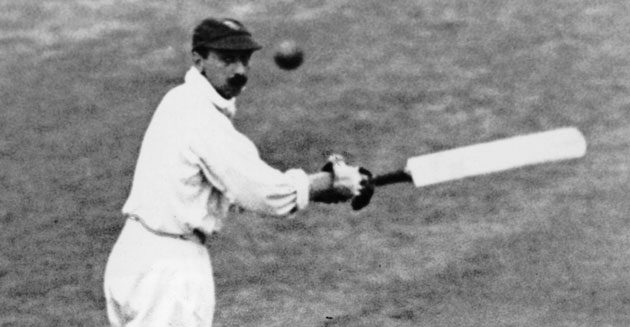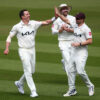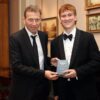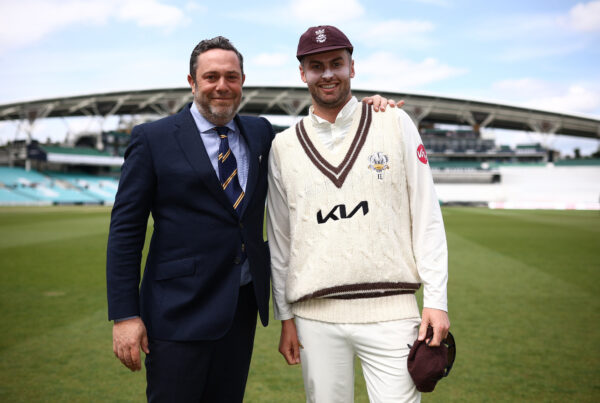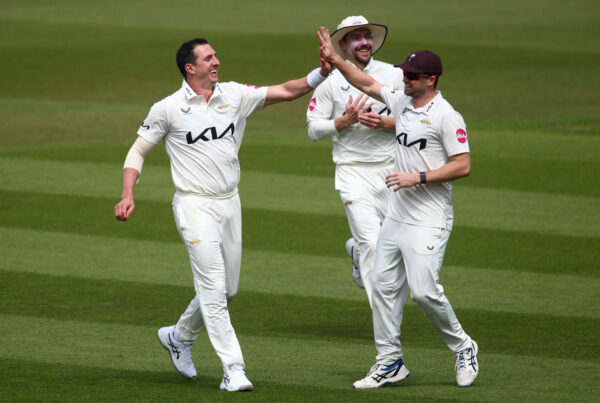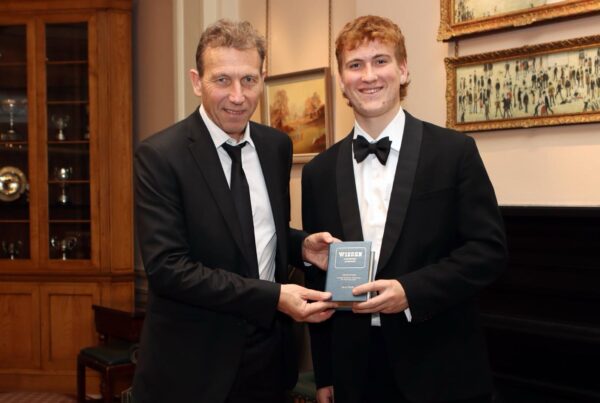Looking back 100 years, Richard Spiller explores the fortunes of Surrey as their captain Percy Fender produced a magnificent personal effort in a bid to steer his side to the County Championship.
A century ago, Surrey went into the new season hoping their steady improvement since cricket’s resumption after the First World War – fourth in 1919, third a year later and then runners-up in 1921 – would take them all the way to the summit of the County Championship. That they failed to do so was despite the herculean efforts of captain Percy Fender.
Inspirational and astute, utilising tactics so sharp that some felt they descended into gamesmanship, Fender’s ingenuity was essential for Surrey to have a chance of landing the title given the limitations of his attack and unforgiving pitches at The Oval, which offered little encouragement to bowlers.
Fender had plenty of batting at his disposal, not least with the return to action of Jack Hobbs. “The Master” might have been in his 40th year but having missed much of the 1921 season, firstly through a thigh strain and then appendicitis which grew so severe that it put his life in danger, Hobbs took a more studied approach to batting and it yielded 10 centuries in a summer which grossed 2,552 runs in all first-class games.
His opening partner Andrew Sandham was also prolific while Andy Ducat and Tom Shepherd reached four-figures too. So did Fender, the top-order so solid that he could unleash the destructive ability which had seen him score a century in 35 minutes against Northamptonshire in 1920.
Two years on he launched the Championship campaign by making 185 against Hampshire at The Oval – his highest in first-class cricket – which took just 130 minutes. And later in the season, against Kent, Fender’s 137 came in 90 minutes, including a spell of 52 off 14 balls as the massive Kennington boundaries were easily reached.
Fender’s cunning as a captain and his ability to score quickly was best illustrated at Grace Road in June. Hobbs’s 145 had led the visitors to a mighty 501-8dec, Leicestershire’s 334 all out meaning they had to follow on. The hosts appeared to have achieved safety when they reached 316-5 at tea on the final day only for their new captain Gustavus Fowke to declare – legend had it that Fender persuaded him that the match was dead and, with a long trip to Bradford ahead, the Surrey fielders could do with a rest – leaving a target of 150 in 80 minutes. Fender elevated himself to number three and smashed 91no to win by six wickets with 17 minutes to spare.
With his beaky nose, on which glasses were perched, and knee-length sweaters, public schoolboy Fender transcended class divisions within his own dressing room and created fear among opposition teams wondering what he might do next.
But it wasn’t enough to land the title. Champions Yorkshire had four batsmen going past 1,000,
including their openers Herbert Sutcliffe and Percy Holmes, but three bowlers could boast 100 or more wickets, led by Abe Waddington’s 127 with England’s kingpin left-arm spinner Wilfred Rhodes close behind with 84.
Bowling a mixture of seam and leg-spin, Fender claimed 143 Championship wickets to complete the double, plus snaffling a remarkable 33 catches, but the next best was Alan Peach’s 60 victims. They were supported by the wonderfully safe gloves of wicketkeeper Herbert Strudwick.
Paceman Bill Hitch was fading away, collecting 50 wickets, but veteran seamer Tom Rushby – an integral member of the Surrey attack for almost two decades – faded away through ill-health.
Finishing third was a major achievement, Nottinghamshire being runners-up, and Surrey played six fewer matches than Yorkshire, the title being decided on average points. It mattered not that Fender’s side lost just one match, being thrashed by 10 wickets against Kent at Blackheath.
And it was Kent who were to deprive Surrey of a player, amateur Alfred Jeacocke’s season being ended in August when Lord Harris – master of all he surveyed at both Canterbury and Lord’s – challenged his eligibility because Jeacocke’s was in Kent, the county border running down the middle of the road which separated it from Surrey.
Once Yorkshire took possession of the title, their first for a decade, they were not going to let it go and accumulated four on the trot, proving the dominant force of the inter-war years given they went on to win it seven more times in the 1930s.
There were no Tests that summer. Australia had visited the previous year and South Africa were not due until 1924, such were the limits of the international programme then. That meant Gentlemen versus Players – amateurs v professionals – was the highlight of the summer for many. First they met at The Oval in early July, Hobbs’s 49 the highest score of a rain-dominated match, rejoining battle at Lord’s a fortnight later. Captaining the Players for the first time, he hit 140.
Yorkshire’s reward for winning the title was to play The Rest at the end of the season at The Oval and Hobbs reminded them of his prowess again by making the 10th and final century of the summer, taking him to 99 in first-class cricket.
The Oval
Even if there was no international cricket, The Oval was still a busy place. The giant crowds which had witnessed the Ashes Test a year earlier sharpened the club’s determination to improve the facilities and enlarge the capacity of the ground. A new 31-year lease was agreed with the Duchy of Cornwall in May and the improvement programme included cutting down a number of trees surrounding the ground, which were proving a convenient aid for spectators to climb over the perimeter wall.
Among the developments were to be construction of the Vauxhall Stand, working beginning the following year, which proved a highly durable landmark within the ground for the next 80 years.
What else happened in 1922?
The British Empire reached it’s zenith, occupying a quarter of the world and ruling over one in four people, but it was already showing signs of crumbling. Egypt became self-governing and agitation in India increased with the arrest and imprisonment of Mohandas Gandhi for sedition.
The Anglo-Irish Treaty was ratified by the Dail but the newly-created Irish Free State became bogged down in civil war. The Northern Ireland Parliament voted to remain part of the United Kingdom but life was no calmer there.
The first radio broadcasts were made in the USA and the British Broadcasting Company – forerunner of the corporation – went on air in late December.
Joseph Stalin was appointed as general secretary of the Communist Party in Russia, increasingly taking control as revolutionary leader Vladimir Lenin’s health deteriorated. In December the Soviet Union was founded, with Ukraine among the constituent republics.
In Washington, the Lincoln Memorial was dedicated.
Benito Mussolini’s National Fascist Party took power in Italy.
Pius XI succeeded Benedict XV to become the 259th Pope.
Insulin was used to treat diabetes for the first time.
Huddersfield Town beat Preston North End 1-0 in the FA Cup final at Stamford Bridge, Wembley Stadium being readied for its debut the following season. Liverpool were the Football League champions, enjoying a six-point cushion over Tottenham Hotspur. Australian Gerald Patterson won the Wimbledon men’s title, beating Briton Randolph Lycett in three sets. France’s Suzanne Lenglen won the fourth of five successive women’s titles.
Walter Hagen became the first American to win the British Open, his triumph at Royal St George’s the first of four successes, while Wales claimed the Five Nations Championship.
David Lloyd-George’s Liberal-Conservative coalition, which had governed the United Kingdom since midway through the First World War in 1916, was ended by a rebellion of Tory backbenchers. They went on to form the 1922 Committee, which is still giving Prime Ministers trouble now. The Conservatives won the subsequent election under Andrew Bonor Law.
